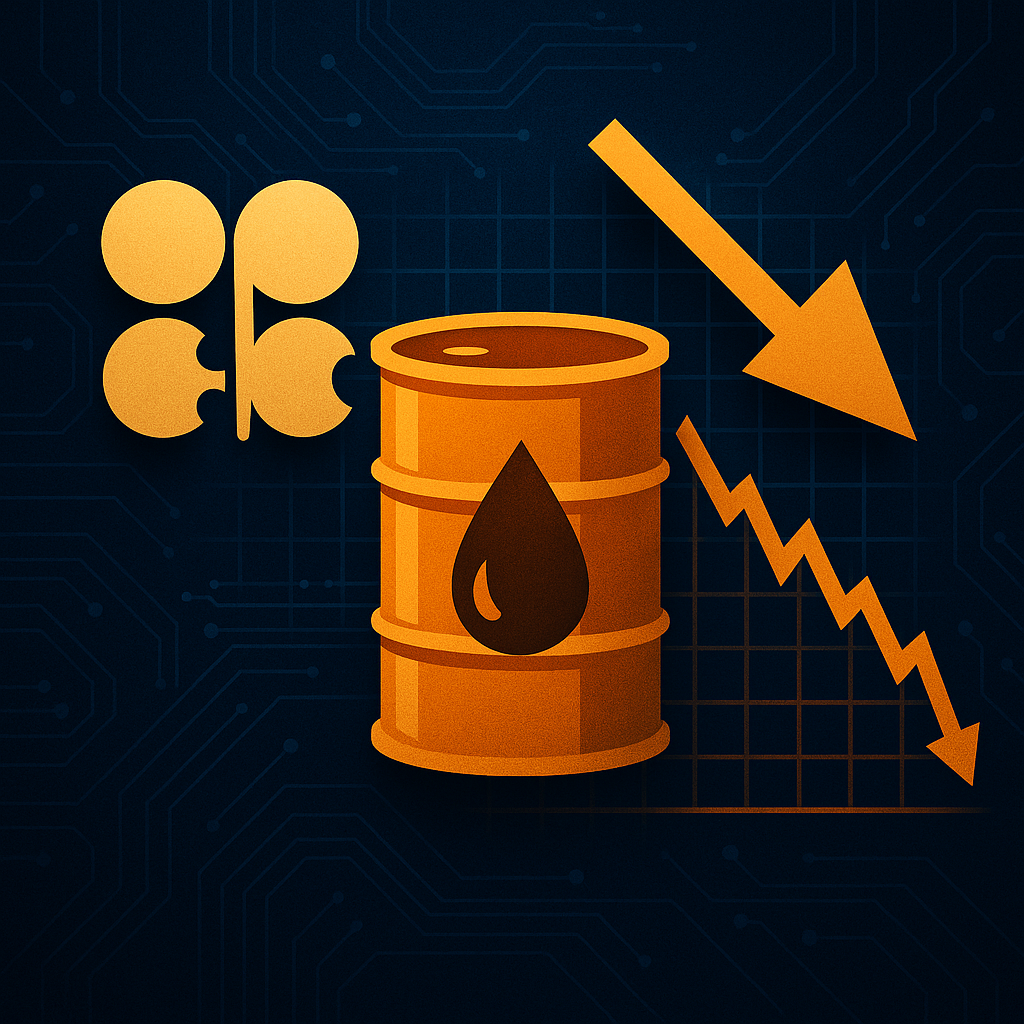OPEC+ has reignited volatility in global commodity markets with its recent announcement to boost oil output, reversing months of production curbs that had supported prices through early 2025. The decision—made during the alliance’s latest ministerial meeting—immediately pushed oil futures down by over 5%, rattling both energy investors and commodity-linked sectors.
As Reuters reports, the coordinated increase is intended to stabilize supply and respond to rising global energy demand projections. However, market participants are concerned the move could oversaturate supply and derail the commodity rally seen in Q1.
Supply Shift Resets Price Expectations
The OPEC+ decision affects not only crude oil but also a broader basket of commodities, from natural gas to industrial metals, many of which are intricately tied to oil-related logistics, energy costs, and macro sentiment.
Key developments include:
- WTI crude dropped to $72/barrel and Brent crude hovered just above $75/barrel—both levels last seen in late March.
- Copper and aluminum dipped slightly as traders anticipated softer input costs across mining operations.
- Gold prices, often inversely correlated with oil volatility and inflation expectations, edged higher as risk-off sentiment grew in early trading.
According to a recent note from Bloomberg Intelligence, “the move marks a shift from defensive output strategies to competitive market retention, with clear implications for margin compression across the energy supply chain.”
Why This Matters for Investors
Oil is not just a standalone asset—it’s a pricing benchmark, inflation signal, and global trade proxy. Any fluctuation in oil supply cascades into other sectors, affecting transportation costs, raw material pricing, and even central bank policy decisions.
For investors, this means:
- Energy sector earnings may face short-term headwinds, particularly for U.S. shale producers and oil majors like ExxonMobil (XOM) and Chevron (CVX) that rely on higher break-even prices.
- Industrial stocks and manufacturing-linked commodities could benefit from cheaper energy, aiding profit margins in heavy sectors like construction and transport.
- Emerging markets tied to commodity exports, such as Nigeria, Brazil, and Russia, may see currency and bond market volatility as trade balances are recalibrated.
Future Trends to Watch
1. Strategic Stockpile Behavior:
Countries like China and India are likely to accelerate stockpile replenishments at lower price points, potentially creating a secondary wave of demand.
2. OPEC+ Cohesion Risks:
Divergences within the alliance—especially between Saudi Arabia and lower-cost producers—could strain unity, raising questions about output discipline in the second half of the year.
3. Inflation and Fed Watch:
A drop in energy prices may ease pressure on inflation indexes. If sustained, this could impact the Federal Reserve’s rate stance and shift flows into rate-sensitive asset classes.
4. Green Energy Transition Watch:
Lower fossil fuel prices may slow near-term capital inflows into renewables, although this also offers entry points for long-term ESG investors.
Actionable Takeaways
💡 Key Investment Insight:
OPEC+’s production pivot resets expectations for energy and broader commodity markets. Investors should:
- Rebalance energy allocations by diversifying beyond crude oil—consider natural gas, uranium, or midstream infrastructure plays.
- Look for margin expansion opportunities in energy-intensive sectors like airlines, freight, and chemicals.
- Watch commodity-sensitive ETFs such as XLE (Energy Select), GSG (iShares S&P GSCI), and DBB (Invesco DB Base Metals).
Now is a strategic moment to evaluate portfolios for sensitivity to energy price dynamics, especially in a geopolitically charged and inflation-sensitive environment.
Whether you’re tracking oil, metals, or macro catalysts, staying current on supply-side shocks is key to smart positioning. For daily updates and forward-looking investor intelligence, stay plugged in to MoneyNews.Today—your trusted guide to global markets.





